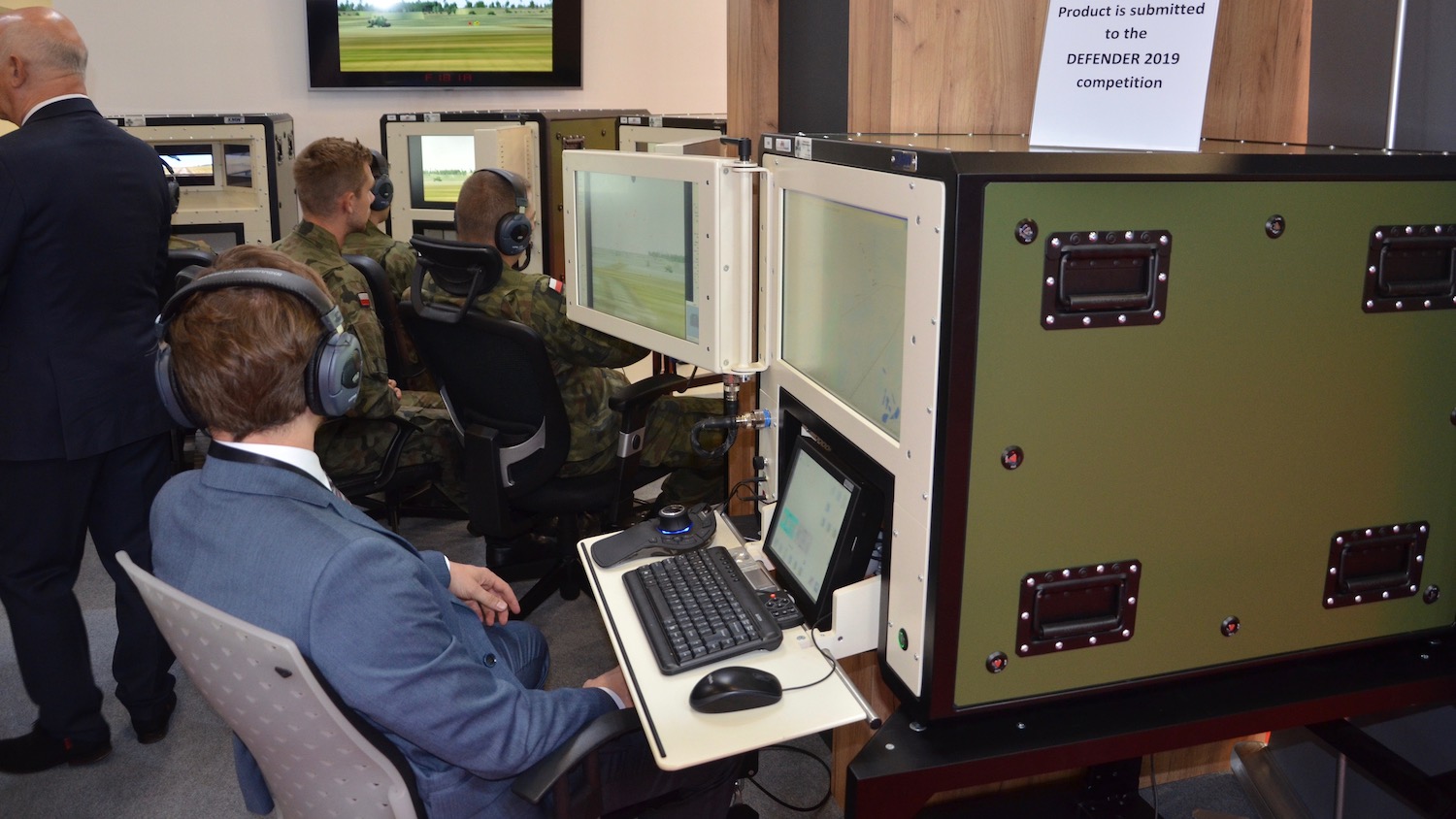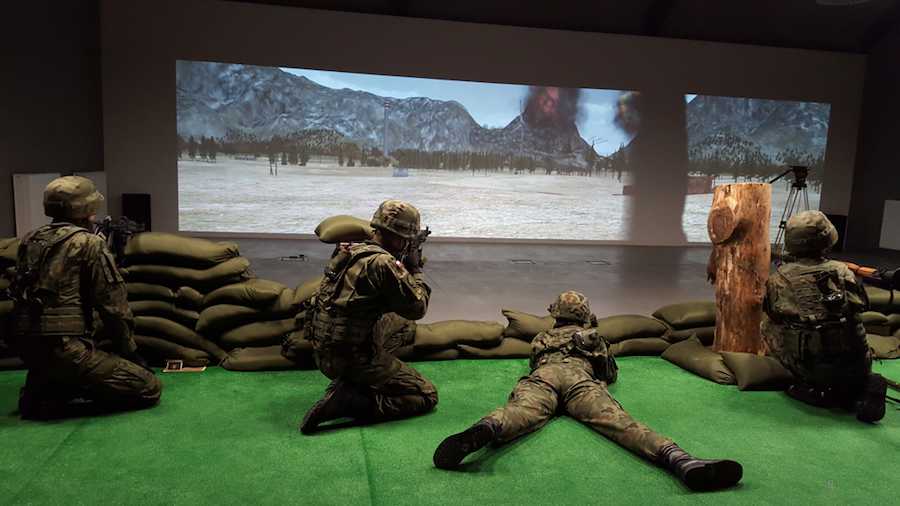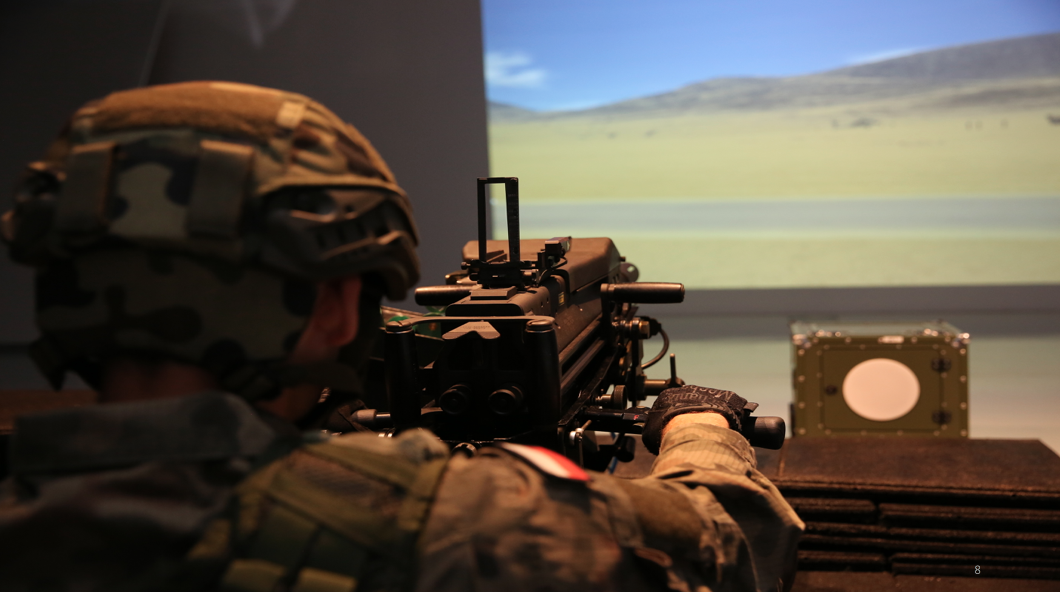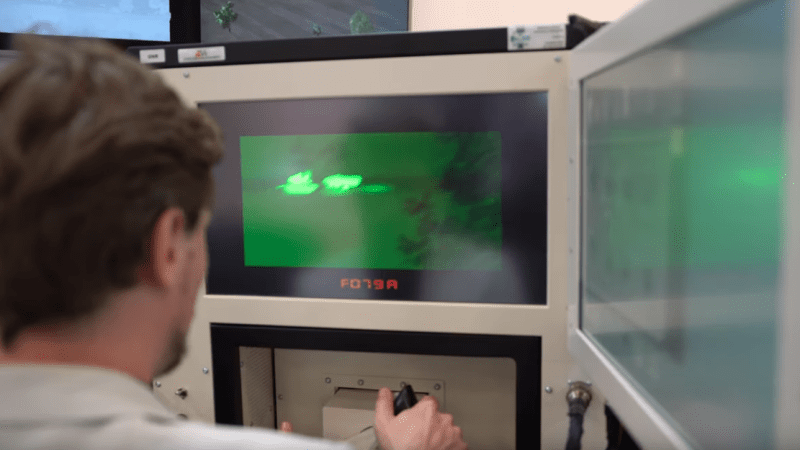Autocomp Management has recently developed two training systems, jointly with the Military Institute of Armament Technology. The first one is the TTT system (Table Top Trainer), designed for the purpose of training the Leopard 2 MBT crews. The purpose of the second one, known as SI-C, is to train the firearm users, including civilians.
TTT modular training solution is currently offered in a variant destined for tactical and engagement training, designed for Leopard 2A4/A5 and modernized Leopard 2PL main battle tanks. It is a response to the growing problems in the Leopard MBT crew training domain, also making it possible for the process to be more cost-effective.
TTT solutions allow for a similar replication of a myriad of armament systems, including T-72 MBTs, Rosomak APCs, BWP-1 IFVs, Krab self-propelled howitzers or SMK-120 Rak self-propelled mortars. Virtual battlespace is the primary common ground between these simulator systems. Same applies to high quality of the solutions offered.
Read more: Will the Polish Simulators Conquer the US?
The training process includes teaching (of design and operating principles pertaining to targeting systems, fire control systems, the gun, and so on) and perfecting the MBT driving skills in the predefined terrain or weather conditions. The training may take place at any time of the day, with the use of the available support systems. Firing the main gun and the auxiliary armament fully replicates the principles of using these assets on the contemporary battlefield and matches the rules contained in the tactics-related regulatory documents. The system allows for full replication of the training/live fire training curriculum applicable to the real training on the actual MBTs.
TTT system is an integrated set of 4 or 5 modules, involving the loader optionally. Each of the modules features an integrated transport frame that makes it possible to rapidly prepare it for operation or transport. The system also includes integrated computers, displays, electronic and executive systems, all required for the simulator to function.

The system includes IOS (Instructor), CMDR (Commander), DRV (Driver) and GNR (Gunner) modules. Notably, the Driver module also features external foot-pedals device as well. Accessory box contains all of the additional equipment, including wiring and external hardware (headphones, mouse and keyboard for the instructor, driver’s foot-pedals module, wiring) required to launch the system.
Steel frame provides the TTT system with solid protection. The whole kit may be set up in 30 minutes by the 4-man MBT crew. TTT may be set up in any room of proper specification, thanks to which it may be used to conduct training at military bases without some significant infrastructure established. At the same time, using that equipment makes it possible to maintain and perfect the skills of the Leopard tank crews, without imposing excessive wear on the actual platforms.
The TTT systems are powered via a single standard mains connection. No specially designed quarters are required for the system, only some conditions need to be met. The operational temperature range is defined as +17°C to +35°C and maximum length of uninterrupted training period shall be kept at a level that would not be shorter than 12 hours.
TTT can also be integrated with the existing Leopard 2 MBT simulation systems, as well as with the ŚNIEŻNIK solution. This gives one an ability to increase the number of trainees, up to a company level for instance. Furthermore, the TTT systems also allow for conducting bilateral exercises where individual users use other armament system belonging to red force and fighting the Leopard platforms. TTT, thus, is flexible and modular in use. Similarly designed TTT simulators, jointly developed by Autocomp-Management and Krauss-Maffei Wegmann, are used by the Bundeswehr and in Greece, Sweden and Switzerland.
SI-C firearms training system, on the other hand, is a modular multimedia and compact solution to train the firearm users. Its main component is the compact MP projector that also features a miniaturized PC that controls the system and processes the data. Furthermore, the system also includes laser-dot detecting camera, IR-camera, LCD projector and a speaker.
The SI-C training situations are based on computer animated images. Not only does the simulator make it possible to carry out firearms training with the use of replicas with a laser module installed, but also with the use of actual weapons with a laser module, pneumatic (air soft guns, shooting 1J BBs) weapons or actual weapons firing training or live rounds. In the latter case it is, obviously, required to protect the training area, for the sake of meeting the relevant safety requirements.
SI-C’s operating principle is based on use of a camera monitoring the screen and detecting the laser dot/point of impact. This is done through analysis of the camera image where laser-dot or thermal signatures are detected. The image is a projection of a 3D training environment onto a flat screen.

Each of the recorded shots initiates trajectory computation, corresponding with the ballistics that are associated with the specific types of weapons. Then, that very trajectory is generated in the virtual 3D space. Meanwhile, a hit automatically generates effects that are adequately replicating the results of use of the given weapon or ammunition and then acts as implementation of the scenarios assigned to the given type of exercise. The system is controlled directly from the display or with the use of a wireless keyboard with a touchpad (tablet may also be used here).
Meanwhile, SI-C software has a simple and intuitive menu system that is user-friendly in the process of preparing the device for use. The package includes (individually tailored) two exercise bundles with fixed and editable scenarios. The editable ones can be modified within the scope of shooting conditions.

The training may be configured in indoor, open range and open area settings. The system may also be ordered with situational scenarios (reaction training/procedural training). The individual scenarios for training as such gives the user a broad range of operational environments, based on a database containing around 300 three-dimensional objects (persons, vehicles, infrastructure).
The basic requirements for use of SI-C include a room of dimensions of 5x4x2.5 meters, 230V/10A power-supply and screen surface (3.2x2.1 meter - a wall for instance). SI-C simulator makes it possible to train the soldiers with a myriad of firearms, such as MSBS/GROT or Beryl rifles, or UMP machine pistols.
WITU (Military Institute of Armament Technology), together with Autocomp-Management, provides technical support for operational use of their products. The entities also make it possible for the users to modify the systems, expand them or extend their functionalities to match the user requirements.
